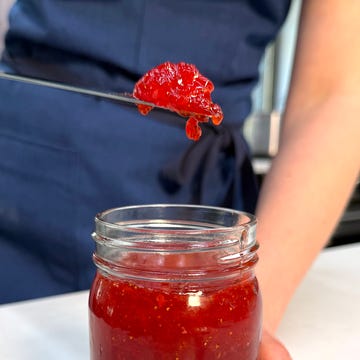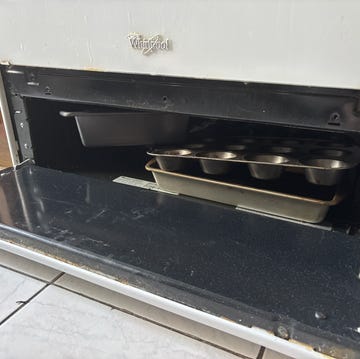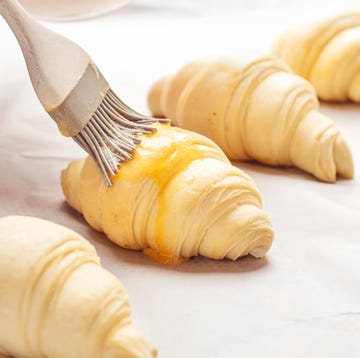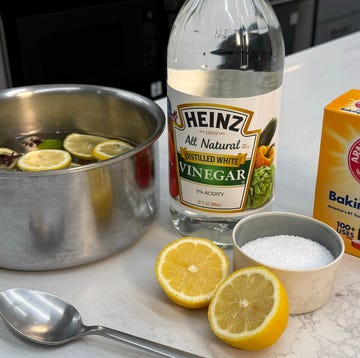Ordering a bottle of wine at a restaurant can be daunting. It’s hard enough to choose a bottle that everyone at the table will love. But when your server or sommelier pours a splash into your glass and looks at you expectantly, many of us scramble to figure out what to say.
This stage of the wine-ordering ritual isn’t for you to send back a bottle if you don’t like the taste; it’s meant to check if the wine has gone bad. But unless you’re a professional or wine connoisseur, that's not necessarily easy to do.
There are many different ways that wine can develop flaws, and it's possible to identify them with a bit of knowledge and practice. We consulted sommeliers and wine experts to unpack all the ways wine can go bad and what you can do about it.
What Are The Different Ways Wine Can Go Bad?
A lot of environmental factors can disturb the contents of your wine bottle, and two of the most common are heat and light. “Think about it: people store wines in cellars, because they're cool, damp, and dark,” says Alison Morris Roslyn, a level 3 sommelier and Founder/CEO of Francey Not Fancy. “Sunlight and heat can basically cook wines.”
Beyond degrading the wine itself, the light and heat can affect the bottle’s main line of defense: the cork. And a failed cork invites a whole other host of issues. The reason why wine cellars are damp is to prevent the cork from drying out and crumbling. Beyond being annoying to pull out with your wine key, a crumbly cork also invites bacteria and oxygen into your bottle.
“While a small amount of oxygen over time can help wine age gracefully, excessive exposure can lead to rapid deterioration,” says Art DeCaro, CMS II and director of training at Waters Edge Wineries.
You don’t want corks to get too dry, but it's also bad if they get too wet. Corks that absorb too much wine can be contaminated and cause a phenomenon known as cork taint. “This is a musty odor caused by a chemical compound called 2,4,6-trichloroanisole (or TCA),” says Higor Valle, Corporate Wine Director of Mr. Hospitality Miami.
The aroma of TCA has been compared to a lot of things that small bad. “A failed cork can produce flavors ranging from wet dog to damp cardboard,” says Daniel Shereff, Beverage and Service Director at Excelsior Hospitality in Austin, Texas.
Which Types Of Wine Are More Likely To Go Bad?
“While there's truth in aging like a fine wine, some wines don't age as well as others (we can't all be Jane Fonda),” says Audrey Wayne, certified sommelier and the brains behind @thesinglesomm on TikTok. “How the wine is made can be a large factor in how well it can age.”
Sturdy, complex red wines with high amounts of tannins typically fare better when aged. On the other hand, wines with lower amounts of tannins, alcohol, and acidity are more sensitive to spoilage. White wines and rosés in particular are less likely to withstand environmental fluctuations. The same goes for natural wine, which typically has little to no preservatives like sulfur that would protect it from spoilage.
In fact, some wines aren’t meant to be aged for very long, or at all. “Non-vintage Champagnes or sparkling wines are not made for aging,” says Morris Roslyn. “If your Champagne or sparkling wine doesn't have a year on the bottle, you should drink it within three years to guarantee its freshness.”
You also should plan to go through your screw top bottles fairly quickly. “[Screw caps are] used to help preserve that freshness and brightness in the wines, they don't need oxygen to help develop and they're made in a way that calls to be consumed within that first year of purchasing more often than not,” Wayne adds.
How Can You Tell When Wine Has Gone Bad?
You can rely on several sensory cues to determine if a bottle of wine has gone bad. First and foremost, you should visually examine the bottle before you buy it. “Check the cork for signs of leakage or damage. A bulging cork can indicate that the wine has been exposed to excessive heat,” says Valle. Shereff adds that a cork that looks wet, discolored, or moldy also indicates spoilage.
You can also look at the amount of wine in the bottle itself. “Typically you want the wine to reach the neck of the cork,” says Morris Roslyn. “If it doesn't reach the neck, or there is a big gap of air between the foil seal and the wine in the bottle, the wine level is too low and your bottle may be spoiled.”
Next, you can rely on your sense of smell. “Upon opening a bottle, an off-putting smell such as vinegar, nail polish remover, or a barnyard-like odor indicates that your wine has gone bad,” says DeCaro. Shereff also adds that you should hear alarm bells if your wine smells like “cooked fruit (think processed sweetness) and roasted sugar.”
If the smell isn’t enough to convince you, pour some of the wine into the glass and take another look. Spoiled wine will often appear discolored and take on a darker, sometimes brown color. Still not sure? Take a sip. “The not-so-simple answer is to trust your instincts,” Shereff says. “If your bottle tastes more like vinegar than wine, you may have a problem.”
How Can You Prevent Wine From Going Bad?
To avoid wasting your money on bad wine, you should always begin with smart shopping. You typically want to avoid stores that display their wine in bright sunlight, or if the bottles on the shelf have developed layers of dust from sitting out for a long time.
“The people who handle your wine are the best line of defense against getting a problematic bottle. Good purveyors will reject pallets that have been sitting in the sun, have weeping corks, or are otherwise damaged,” Shereff says. “Make friends with your local wine shop! Friends never let friends buy bad wine.”
DeCaro also suggests saving your wine shopping for the end of your errands. “This prevents the wine from heating up in the car, which can cause spoilage or make it too warm to drink immediately,” he says. “Consider using a wine chilling thermal bag or cooler to maintain the temperature during transport.”
Once your bottle makes its way home, it all comes down to storage. A temperature-controlled wine fridge is the safest location, but you should at least aim for a spot that mimics the dark and cool environment of a wine cellar. “Store wine at a consistent, cool temperature, ideally between 45-65°F,” says Valle. “Avoid storing wine in places where temperature fluctuates, such as near appliances.”
No matter where you choose to keep your wine, you should always aim to store your bottles horizontally.
“Wine bottles should be stored on their sides to keep natural corks moist and reduce the rate of oxygen ingress,” DeCaro says. “This is less critical for bottles with synthetic corks or screw caps, but horizontal storage is still a good practice.”
What Happens If You Drink Spoiled Wine?
Discovering that your bottle of wine has gone bad is disappointing, but that doesn’t necessarily make it dangerous. Spoiled wine is unlikely to pose serious health risks, especially if you can only manage to take a sip or two.
“If, for some reason, you can get past the smell and taste of spoiled wine, I'm guessing you have a steel stomach and wont have many consequences for consuming spoiled wine,” Wayne says. “Taking down the whole bottle—that's at your own gastrointestinal risk. But also a bottle solo, whether it's good or spoiled wine, has its own host of repercussions.”

















